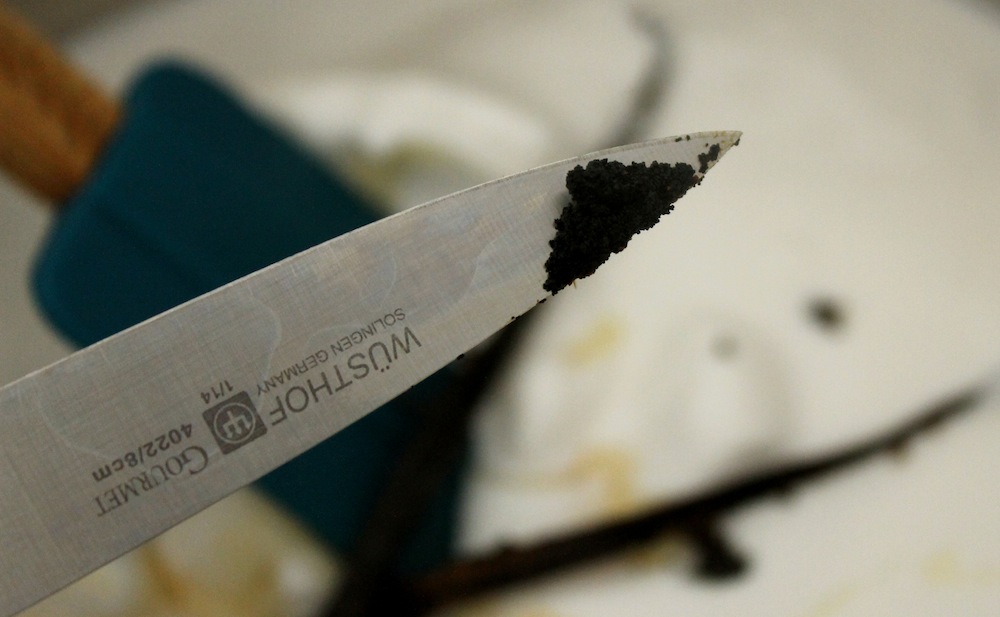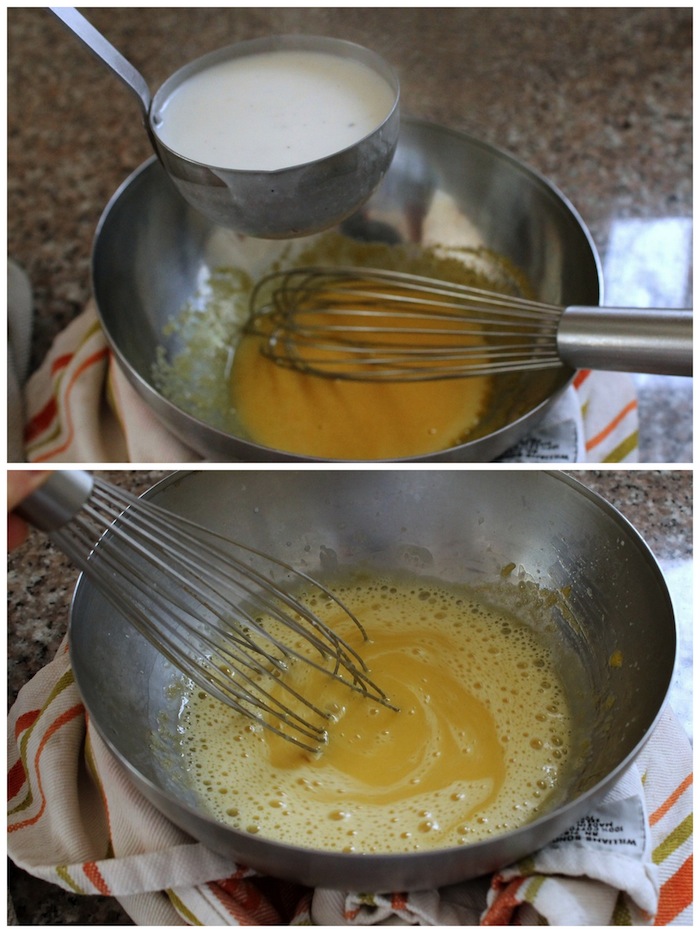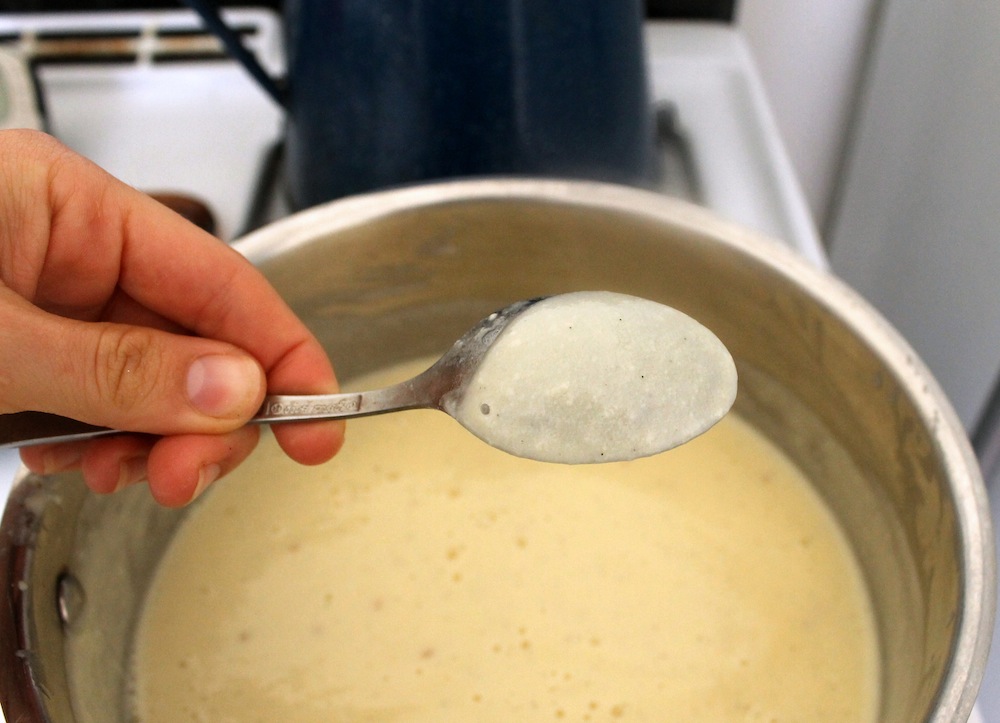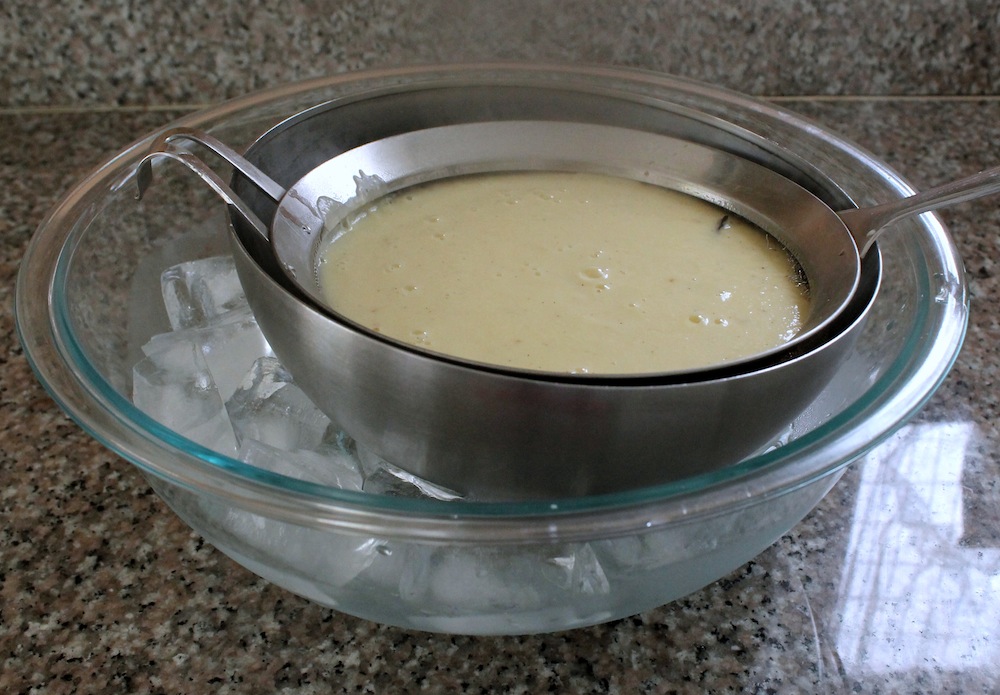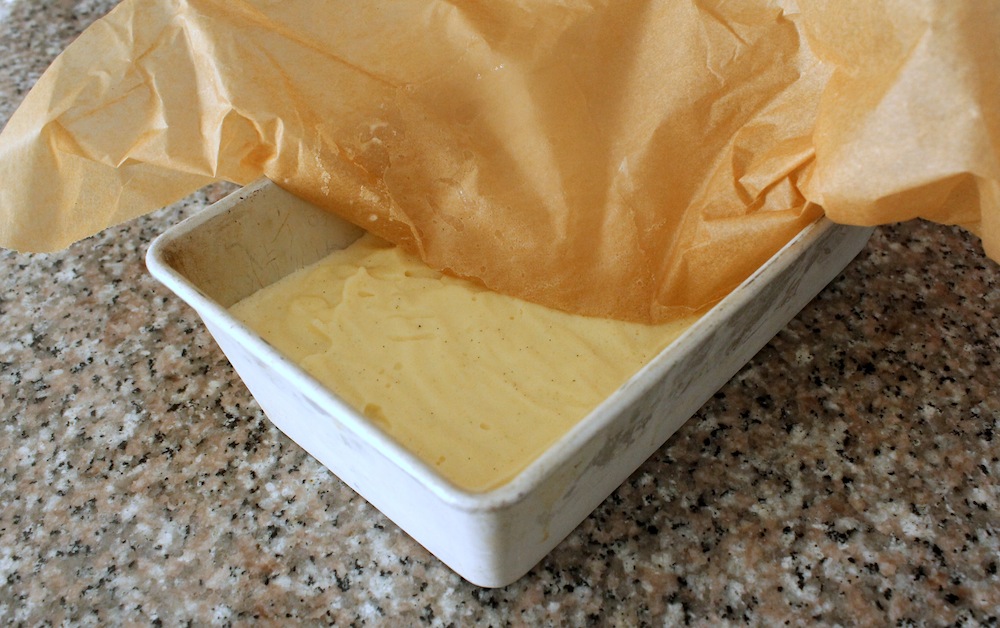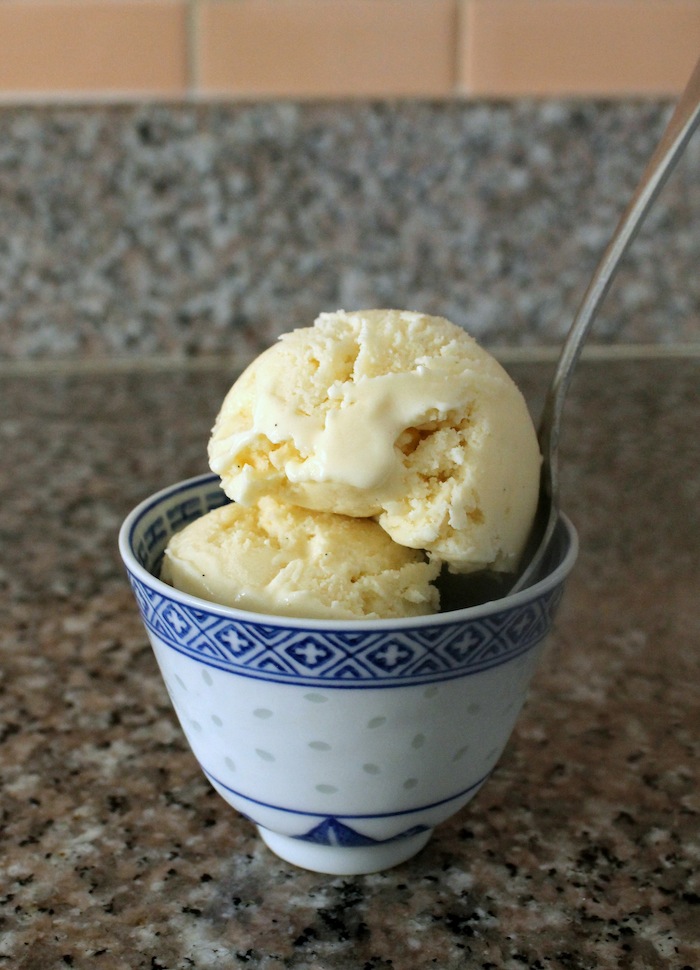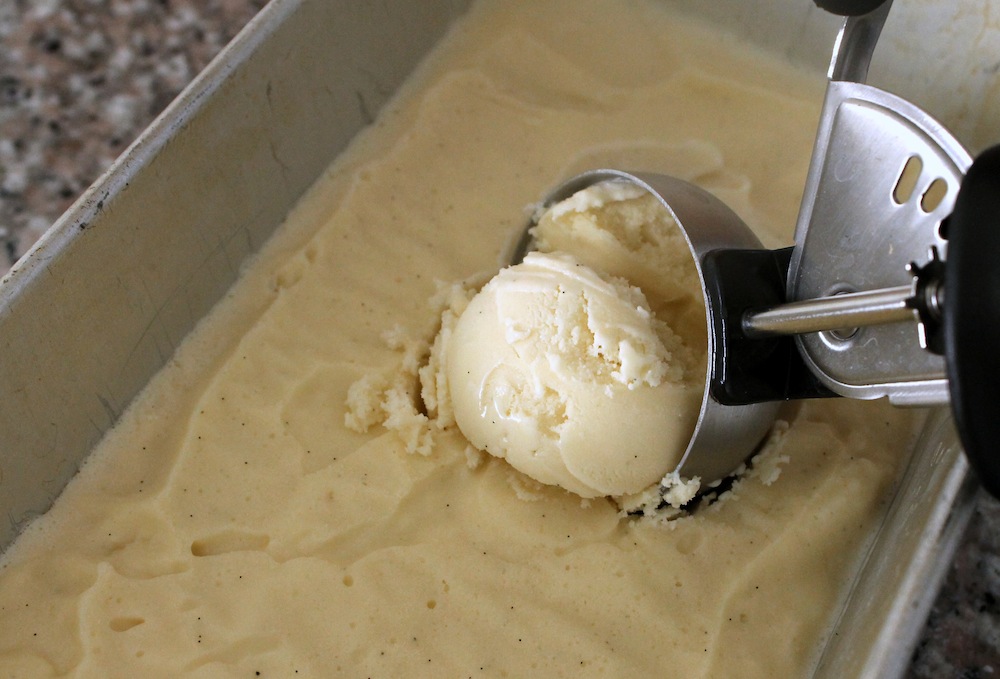
Sometimes recipe testing just doesn’t work out. Sometimes, it’s my fault—culinary errors or forgotten ingredients are common occurrences for even those of us who cook on a daily basis. Other times, the problem lies with equipment. Namely, my freezer. It always seems to work just fine until I need it to be properly cold for a recipe. As soon as I need to churn ice cream, the freezer door mysteriously pops open or the temperature won’t get quite cold enough to freeze anything other than water.
This was my weekend. My plan to develop a pair of coconut milk ice creams for those of us who cannot or chose not to eat dairy was seemed destined not to happen. I wanted to demonstrate that it’s possible to churn creamy, smooth, coconuty ice cream with or without eggs with little more effort than turning on the ice cream machine itself. It wasn’t until after the first batch was churned and chilling that the freezer stopped cooperating. So instead of a duo of frozen treats, one vegan and one definitely not, I have just one, egg-filled ice cream to show for myself. But it is darn good.

Many of the coconut milk ice creams on the internet call for little more than coconut milk, sugar, and maybe a little vanilla. I’ve tried making ice cream this way and it unfortunately doesn’t work very well. The coconut milk needs a little more help to keep from forming a solid block of ice in the freezer. While this creamy milk is certainly rich enough to take the place of heavy cream, it doesn’t behave in the same way. However, there are a couple easy tricks to help prevent icy woes.
First, substitute some of the granulated sugar with a liquid sweetener, such as honey, agave, or corn syrup. I am partial to the flavor of honey, so that’s my sweetener of choice. These particular sweeteners all contain relatively high amounts of glucose, which helps to interfere with water flowing through the ice cream base. If the water can’t move around, it can’t meet up with more freezing water molecules to form large ice crystals. Large ice crystals are the enemy, so it’s best to avoid them as much as possible. An ice cream flavored entirely with honey would lose any distinctive coconut or vanilla flavor, so I use half honey and half regular granulated cane sugar.
The second trick is to use egg yolks. The rich yellow yolks help give the ice cream a silky texture and their extra protein also helps to prevent ice crystals. This style of ice cream is often referred to as French style ice cream or custard ice cream. For flavoring, I like to use vanilla bean, but you could also use a vanilla extract, or go crazy by infusing herbs or spices into the coconut milk.
